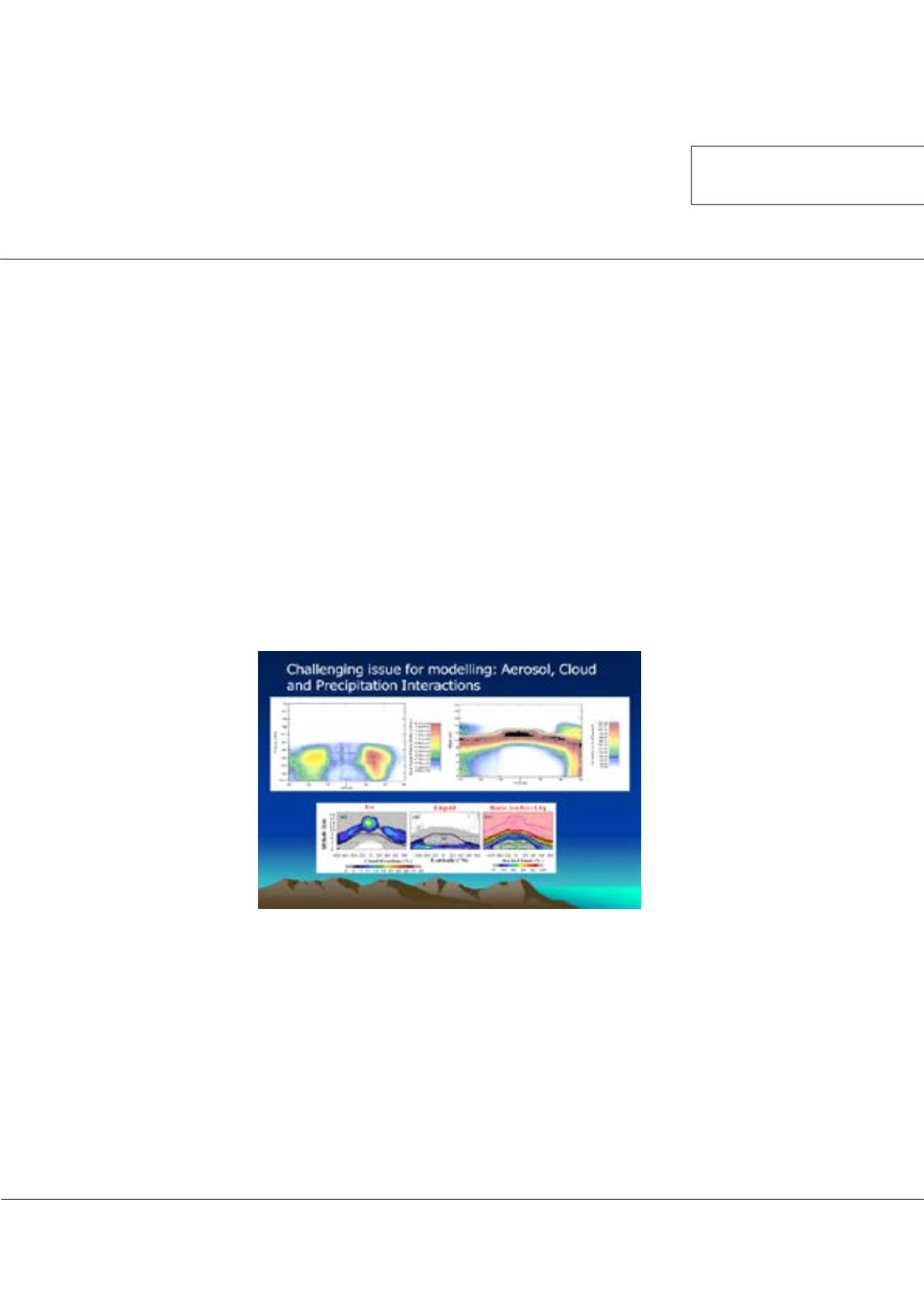

Page 77
conferenceseries
.com
Volume 2
Environment Pollution and Climate Change
ISSN: 2573-458X
Climate Change 2018 &
Global ENVITOX 2018
October 04-06, 2018
October 04-06, 2018
London, UK
16
th
Annual Meeting on
Environmental Toxicology and Biological Systems
&
5
th
World Conference on
Climate Change
JOINT EVENT
On aerosol-chemistry-cloud-climate interactions and entanglements
Rong-Ming Hu
1
, C D O´Dowd
1
, L Coleman
1
, C Noone
1
, T Grigas
1
, S Bekki
2
, O Boucher
2
and
J-L Dufresne
2
1
National University of Ireland Galway, Ireland
2
Institut Pierre Simon Laplace (IPSL), France
A
erosols and chemically reactive gases have important impacts on regional and global air quality and climate change. Despite
decades of efforts, the model simulations of aerosols, chemically reactive gases and clouds are still uncertain due to the
complex conundrum of aerosol-chemistry-cloud-climate interactions. The complicated entanglements and feedbacks among
those atmospheric elements lead to a difficult and painstaking task for reducing the uncertainties in the future air quality and
climate predictions. Nevertheless, the increasing demands for the accurate future air quality and climate information with high
resolution require the high performance of multi-scale modelling. The Aerosol Chemistry Model Intercomparison Project
(AerChemMIP) provides us a good opportunity to quantify the air quality and climate impacts of aerosols and chemically
reactive gases. The project is designed to reduce the uncertainties in emissions, atmospheric compositions, radiative forcing
and climate feedbacks, and improve the capabilities of model predictions. The outcomes of global model simulations will also
be a benefit to improving the regional model simulations using the downscaling technique. With the amazing progress from
ground-based, airborne and space-based measurements, we advocate an approach of integrating modelling and observation
for model process studies, model validations and data assimilation. More
in situ
measurements and model improvements are
necessary to better predict future air quality and climate change on multiple temporal and spatial scales.
Recent Publications
1. Dhomse S, et al. (2018) Estimates of ozone return dates from chemistry climate model initiative simulations, atmospheric.
Chemistry and Physics Discussions 1–40.
2. Shere K, et al. (2013) Trace gas/aerosol boundary concentrations and their impacts on continental-scale AQMEII
modelingsub-regions. Atmos. Environ. 53:38–50.
3. Appel KW, et al. (2012) Examination of the community multiscale air quality(CMAQ) model performance over the North
American and European domains. Atmos. Environ. 53: 142–155.
4. Hu R-M, et al. (2009) Light scattering and absorption properties of dust particles retrieved from satellite measurements.
JSQRT 110:1698–1705.
5. Hu R-M, et al. (2009) New algorithms and their application for satellite remote sensing of surface PM2.5 and aerosol
absorption. Journal of Aerosol Science 40(5):394–402.
Rong-Ming Hu et al., Environ Pollut Climate Change 2018, Volume 2
DOI: 10.4172/2573-458X-C1-002
















